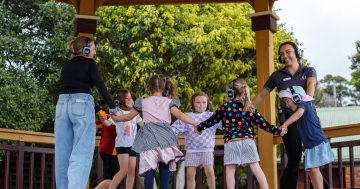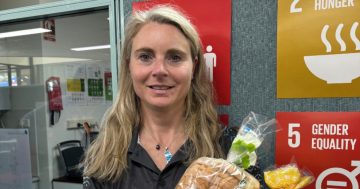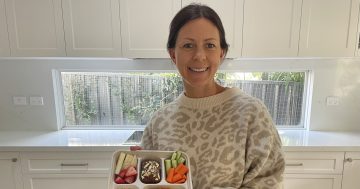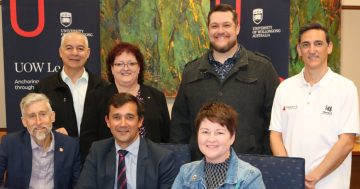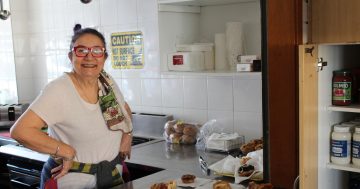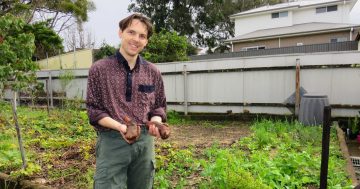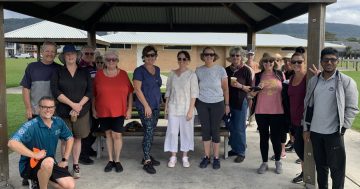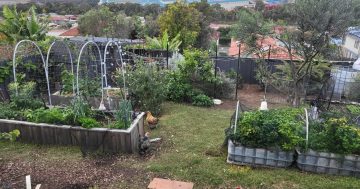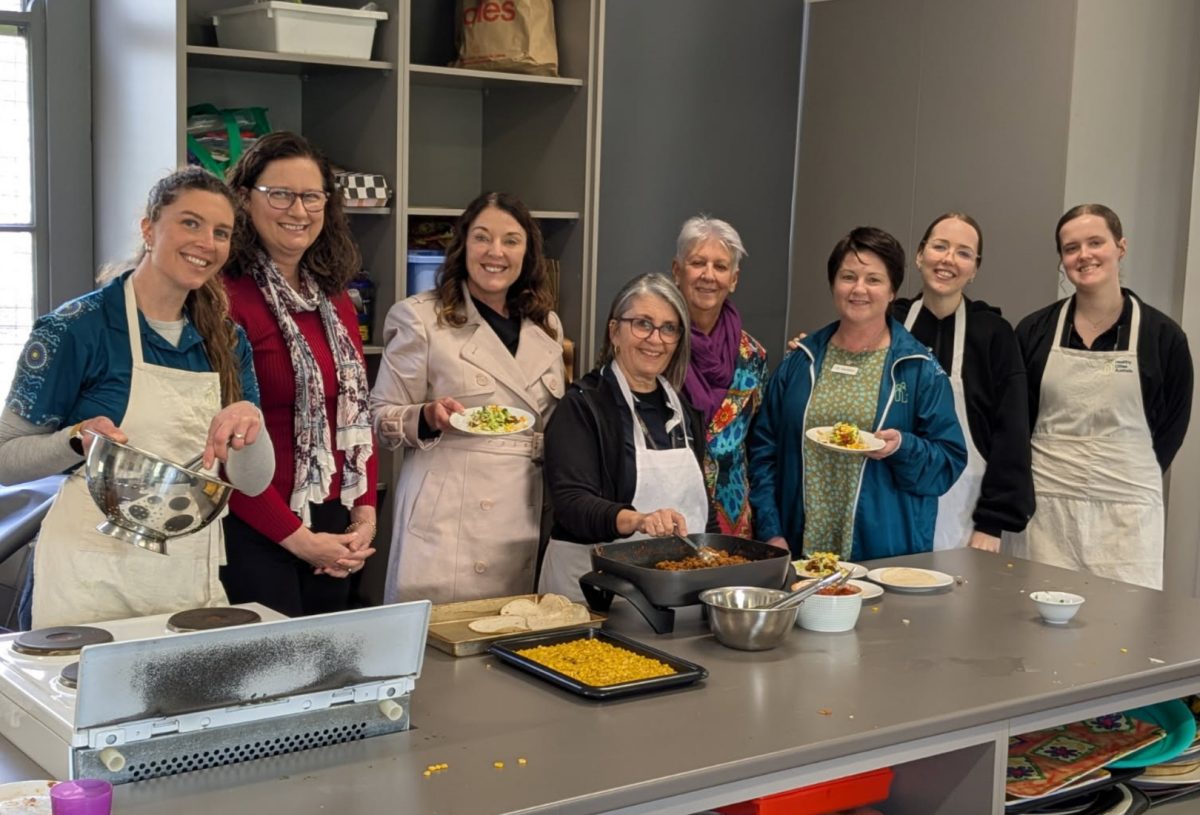
Visitors to the school (l-r): Isabella Russel (HCA), Megan Hammersley (UOW), Alison Byrnes MP (Member for Cunningham), Rosie Johnston (ISLHD), Cr Linda Campbell (Wollongong Deputy Lord Mayor), Kelly Andrews (HCA), Eden Rothnie-White and Caitlyn Humbles (UOW students). Photo: Supplied.
Berkeley Public School is serving up more than simply lessons this year — it’s piloting a healthy, hot school lunch program that could reshape how Australian children eat, improve their wellbeing, and ease cost-of-living pressures on families.
Healthy Cities Australia (HCA) CEO Kelly Andrews said the two-term pilot program provided Year 1 students at the school with three healthy, cooked meals per week, addressing critical nutritional challenges facing Aussie kids.
Kelly said during the past 10 years, different jurisdictions and researchers had looked into the provision of school lunches.
“It’s not a new idea, but it’s an idea that Australia is lagging behind in relation to other countries around the world,” she said.
“We’re a high income country and don’t have a school lunch program, where other countries have had them for quite a long time.”
She said statistics revealed only one in 20 children met vegetable consumption recommendations, with fruit intake better at 64 per cent – but it had decreased 10 per cent in the past five years.
“One of the reasons for pushing it is that fruit and vegetable consumption is just so terrible in all Australians, but particularly in kids,” she said.
“Because kids spend so much time at school, there’s a real opportunity to improve the quality of the lunches.
“We know around 80 per cent of school lunch boxes are probably not very nutritionally sound.
“It’s not to blame the parents — they’re juggling so much and quite a lot of households are quite food insecure.
“It’s an initiative to boost fruit and vegetable consumption through easy, equitable school lunches that every child will get so it doesn’t matter where you come from or what background your family’s from, it’s looking at that universal outcome for good nutrition.”
Kelly said anything that relieved the financial burden for parents during this cost-of-living crisis was a positive.
She said it also encouraged social connectedness, with students sitting down with their friends to eat.
“At Berkeley, they make the tables really pretty with a little vase of flowers and colourful placemats and cups and cutlery,” she said.
Run until the end of this term, it’s a collaborative project with HCA, Berkeley Public School, the University of Wollongong (UOW), and the Illawarra Shoalhaven Local Health District’s (ISLHD) health promotion unit, with researchers tracking potential benefits including improved concentration, social connection, and long-term health outcomes.
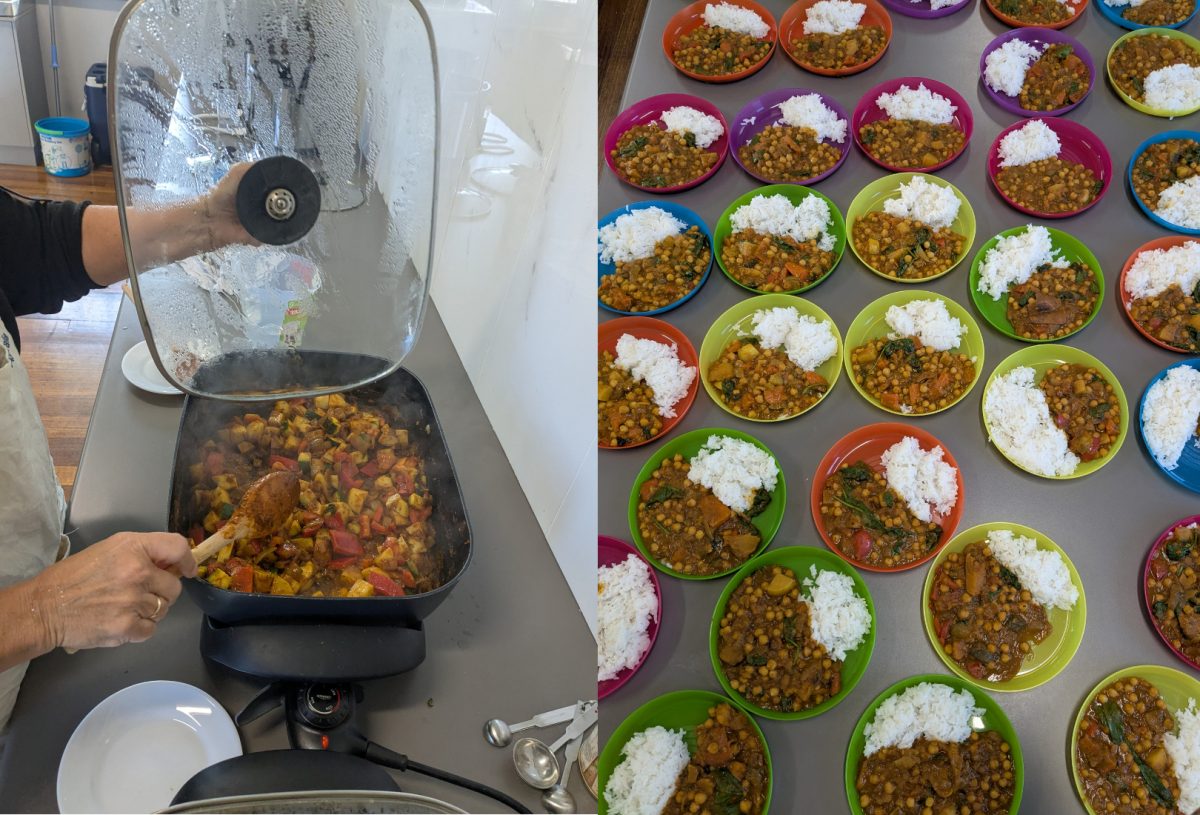
Meals provided to students. Photo: Supplied.
“Our colleagues from the local health district went into the school and chatted to the kids about what foods they liked and didn’t like,” she said.
“They had to figure out what would go down well, and also to get their head around cultural foods, food restrictions and allergies.”
She said preliminary feedback was overwhelmingly positive, with parents receiving recipe cards and even replicating meals at home.
“We’re really interested to hear from the teachers about other impacts that it might be having on their attendance, or their concentration, and just their overall wellbeing when they’re at school,” she said.
“One of the main findings from a few national surveys is that those discretionary foods are taking up a lot of space in lunchboxes.
“Anything in a packet which is highly processed, lots of salt, lots of sugar, is not the ideal diet for good nutrition, and there’s also the waste packaging factor.”
Kelly said with studies indicating the economic benefits were estimated at $10 returned for every $1 invested, the program could be a model for future national school lunch strategies, potentially transforming preventative health approaches in Australia.
“We really want to contribute to a national conversation that is really strongly emerging, and advocate for State and Federal governments to look at a national rollout of school lunches,” she said.
“Getting healthy eating habits early in childhood will definitely influence their health outcomes later in life, and it’s about preventing chronic disease.”
Kelly said part of that was kids understanding nutritional education and linking it with growing, preparing and eating food.
She said the health system was in crisis and the usual interventions from past decades to increase fruit and vegetable consumption weren’t working.
“The statistics are still going down and the chronic diseases are going up, so we need to look at something a lot more systemic to fix the problem,” she said.
She said next term would focus on the data evaluation and publishing the results to see how the children engaged with new foods, how they performed at school socially, and their health and wellbeing.









